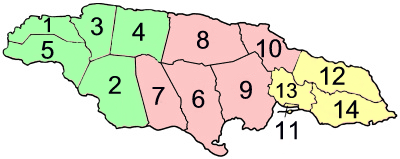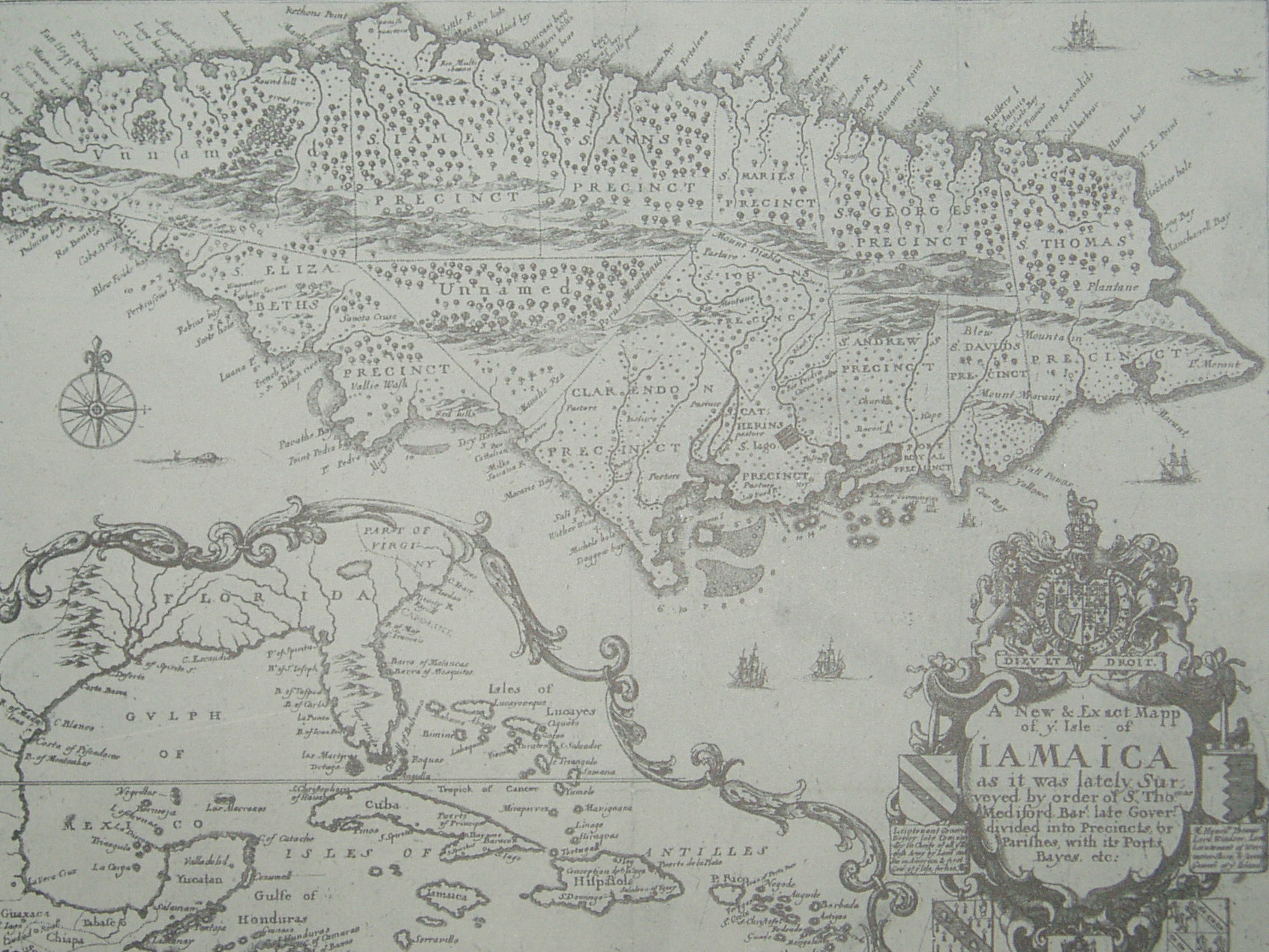|
Cornwall County, Jamaica
Cornwall is the westernmost of the three historic counties into which Jamaica is divided. It has no current-day administrative significance. It includes Montego Bay, the island's second largest city by area. ''The county of Cornwall is shown in green'' History Jamaica's three counties were established in 1758 to facilitate the holding of courts along the lines of the British County court system. Cornwall, the westernmost, was named after the westernmost county of England. Savanna-la-Mar was its county town In the United Kingdom and Ireland, a county town is the most important town or city in a county. It is usually the location of administrative or judicial functions within a county and the place where the county's members of Parliament are elect .... Parishes References {{Authority control Counties of Jamaica 1758 establishments in the British Empire ... [...More Info...] [...Related Items...] OR: [Wikipedia] [Google] [Baidu] |
Parishes Of Jamaica
The parishes of Jamaica are the main units of local government in Jamaica. They were created following the English Invasion of Jamaica in 1655. This administrative structure for the Colony of Jamaica developed slowly. However, since 1 May 1867 Jamaica has been divided into the current fourteen parishes. These were retained after independence in 1962. They are grouped into three historic counties, which no longer have any administrative relevance. Every parish has a coast; none are landlocked. List (1) The parishes of Kingston and Saint Andrew together form the ''Kingston and St. Andrew Corporation''. (2) The parish of Kingston does not encompass all of the city of Kingston. Most of the city is in the parish of St. Andrew. History Early history Following the English conquest of Jamaica the first phase of colonisation was carried out by the Army, with a system of Regimental plantations. These were drawn up on the southern flat lands, with the Regimental commanders charge ... [...More Info...] [...Related Items...] OR: [Wikipedia] [Google] [Baidu] |
Hanover Parish
Hanover is a parish located on the northwestern tip of the island of Jamaica. It is a part of the county of Cornwall, bordered by St. James in the east and Westmoreland in the south. With the exception of Kingston, it is the smallest parish on the island. Hanover is the birth parish of Alexander Bustamante, labour leader, first head of government of Jamaica under universal suffrage, and one of seven Jamaican National Heroes. Its capital is Lucea. History The region was initially under Spanish control as a colony until 1655, when Spain relinquished control to the English. Over time, parishes were formed to govern the island. The parish would go unnamed for many decades even though many of the towns existed. Hanover was established on 12 November 1723. It is the smallest parish in Jamaica and was established from parts of Westmoreland and St James parishes. It was named in honor of the British monarch, George I, who was a member of the German House of Hanover. There had be ... [...More Info...] [...Related Items...] OR: [Wikipedia] [Google] [Baidu] |
Kingston, Jamaica
Kingston is the capital and largest city of Jamaica, located on the southeastern coast of the island. It faces a natural harbour protected by the Palisadoes, a long sand spit which connects the town of Port Royal and the Norman Manley International Airport to the rest of the island. In the Americas, Kingston is the largest predominantly English-speaking city in the Caribbean. The local government bodies of the parishes of Kingston and Saint Andrew were amalgamated by the Kingston and St. Andrew Corporation Act of 1923, to form the Kingston and St. Andrew Corporation (KSAC). Greater Kingston, or the "Corporate Area" refers to those areas under the KSAC; however, it does not solely refer to Kingston Parish, which only consists of the old downtown and Port Royal. Kingston Parish had a population of 89,057, and St. Andrew Parish had a population of 573,369 in 2011 Kingston is only bordered by Saint Andrew to the east, west and north. The geographical border for the parish of K ... [...More Info...] [...Related Items...] OR: [Wikipedia] [Google] [Baidu] |
Westmoreland Parish
Westmoreland is the westernmost parish in Jamaica, located on the south side of the island. It is situated south of Hanover, southwest of Saint James, and northwest of Saint Elizabeth, in the county of Cornwall. The chief town and capital is Savanna-la-Mar. Negril, a famous tourist destination, is also situated in the parish. History The earliest inhabitants of Westmoreland were the Arawak and Ciboney Indians. The Ciboney were first to arrive, from the coast of South America, around 500 BC. Known as "cave dwellers", they lived along the cliffs of Negril. The labyrinth of caves and passageways beneath what is now the Xtabi Hotel in Negril are one of the first known settlements of Ciboney Indians in Jamaica. Christopher Columbus stopped at what became Westmoreland on his second voyage when he landed in Jamaica. One of the first Spanish settlements was also built at present-day Bluefields in this parish. The English took over the island from Spanish rule in 1655. Colonists name ... [...More Info...] [...Related Items...] OR: [Wikipedia] [Google] [Baidu] |
Falmouth, Jamaica
Falmouth ( jam, Falmot) is the chief town and capital of the parish of Trelawny in Jamaica. It is situated on Jamaica's north coast 18 miles east of Montego Bay. It is noted for being one of the Caribbean's best-preserved Georgian towns. The town was meticulously planned from the start, with wide streets in a regular grid, adequate water supply, and public buildings. It had piped water earlier than New York City. History Founded by Thomas Reid in 1769, Falmouth flourished as a market centre and port for forty years at a time when Jamaica was the world's leading sugar producer. It was named after the town of the same name in Cornwall, which was the birthplace of governor of Jamaica Sir William Trelawny, who was instrumental in its establishment. Falmouth was built upon the coast of Trelawny at a place previously known as Martha Brae Point. In 1774, there was only one dwelling in the port of Falmouth, and by 1781 there were only between 8-10 houses there. However, by 1793 the p ... [...More Info...] [...Related Items...] OR: [Wikipedia] [Google] [Baidu] |
Trelawny Parish
Trelawny (Jamaican Patois: ''Trilaani'' or ''Chrilaani'') is a parish in the county of Cornwall in northwest Jamaica. Its capital is Falmouth. It is bordered by the parishes of Saint Ann in the east, Saint James in the west, and Saint Elizabeth and Manchester in the south. Trelawny is known for producing several Olympic sprinters. History In 1770, the wealthy planters in St James and St Ann succeeded in having sections of those parishes become the parish of Trelawny as they were too far from administrative centres. Trelawny was named after Sir William Trelawny, 6th Baronet, the then Governor of Jamaica, whose prominent family had originated at the manor of Trelawny in the parish of Pelynt in Cornwall, England. The first capital was Martha Brae, located inland from Rock Bay. Trelawny is best known for its sugar estates and sugar cane mills. It had more sugar estates than any other parish, so there was need for a sea coast town to export it. Falmouth became a thrivi ... [...More Info...] [...Related Items...] OR: [Wikipedia] [Google] [Baidu] |



